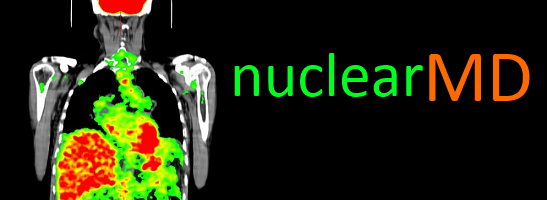Non-Ischemic Cardiomyopathy
52 yrs old male with past medical history of Afib and HTN (non compliant with β blocker for rate control) presented to the Emergency Room with a 3 day history of chest pain. He was admitted for cardiovascular evaluation, including nuclear stress testing, echocardiography, and cardiac catheterization.

Myocardial perfusion imaging was performed with Dipyridamole stress test using one day Tc-99m-Tetrofosmin rest-stress protocol. There were no symptoms or ECG changes to suggest dipyridamole induced myocardial ischemia. The images do not show any reversible perfusion defects to suggest presence of dipyridamole induced myocardial ischemia. Left ventricle is dilated (EDV 176 ccs) and hypertrophied. Gated images show global hypokinesis with an ejection fraction of 34%. These findings suggest non ischemic cardiomyopathy. Echocardiography showed left ventricular hypertrophy and dilatation with a globally reduced ejection fraction of 30-40%.
Subsequent coronary angiography confirmed no significant occlusive disease in coronary arteries. Pt was discharged with continued medical management and follow up with his cardiologist for Afib and newly diagnosed non ischemic cardiomyopathy. ACE inhibitor and diuretic were added to his medical regime for afterload reduction and fluid control.
Although there are many potential causes of non ischemic CMP (1), a possibility may be related to his Afib history and being off his rate control meds for some unknown length of time. One known cause of CMP is tachycardia induced CMP (2), resulting from Afib with poor HR control; the resulting tachycardia puts a large workload on the heart with a resulting deterioration in LV function over time. Although the pt was not tachycardic on evaluation in the ER, he had been off his rate control meds for some unknown time, and could quite possibly be tachycardic for frequent unknown lengths of time, that could eventually have contribute to deterioration of LV function over time.
1) Taylor, G., Primary Care Cardiology, 2nd edition, Blackwell pub, 2005
2) Khasnis et al, PACE July 2005; 28 (7): 710-21
This case was compiled by Dr. David He and Joseph Vollink PA, MEDVAMC
